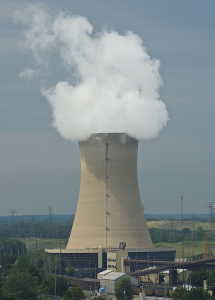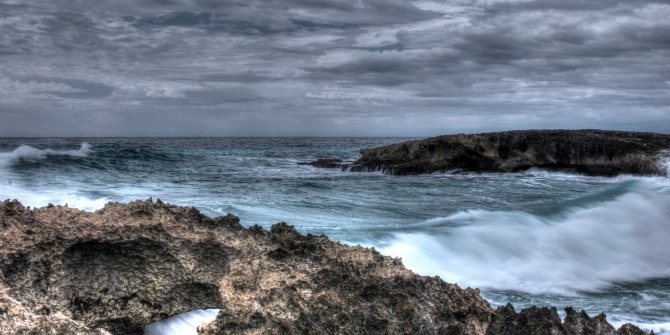 The disaster at Fukushima last year reignited the nuclear debate and left many wondering if the risks involved in nuclear power were worth the benefits. What Will Work? delves even deeper into the issue by questioning the validity of nuclear power’s supposed cost-free and carbon-free advantages. Maria Carvalho thinks the book provides an illuminating analysis on a rather opaque and technocratic industry.
The disaster at Fukushima last year reignited the nuclear debate and left many wondering if the risks involved in nuclear power were worth the benefits. What Will Work? delves even deeper into the issue by questioning the validity of nuclear power’s supposed cost-free and carbon-free advantages. Maria Carvalho thinks the book provides an illuminating analysis on a rather opaque and technocratic industry.
 What Will Work? Fighting Climate Change with Renewable Energy, Not Nuclear Power. Kristin Shrader-Frechette. Oxford University Press. December 2011.
What Will Work? Fighting Climate Change with Renewable Energy, Not Nuclear Power. Kristin Shrader-Frechette. Oxford University Press. December 2011.
This March marked the one-year anniversary of the triple nuclear meltdown at the Fukushima Daichi plants in Japan. This disaster instigated national and international debates on whether nuclear energy still has a place in power generation. At the debate’s core is the question of whether the potential environmental and health risks of nuclear power are negligible in the face of catastrophic climate change risks of a carbon-intensive power sector.
Despite Fukushima, national governments (including the UK) are considering building new nuclear reactors to provide large-scale electricity generation from a ‘carbon-free’ energy source. Kristin Shrader-Frechette’s book, What Will Work: Fighting Climate Change with Renewable Energy, Not Nuclear, arrives within perfect time to enrich the debate.
The brilliance of the book is that it does not focus solely on the inherent risks of nuclear power – though these are methodologically proven to be real and significantly costly. The real contribution of Shrader-Frechette’s book is that it re-examines pro-nuclear arguments of whether or not nuclear power actually is a solution to climate change. By systematically pitting pro-nuclear assertions against the empirical evidence, she arms the reader with the ability to ask informed questions which hold the nuclear industry to account. Is the entire nuclear fuel cycle truly ‘carbon-free’? Does nuclear power actually provide large-scale electricity generation in a cost-effective manner? And finally, will nuclear power really deliver a viable solution to climate change?

One of the most widely held assumptions on nuclearpower is that it is ‘carbon-free’ – and thus, the power sector’s solution to avoiding climate change. This sole characteristic regenerated interest in expanding nuclear power as an alternative to fossil-fuels in order to de-carbonize electricity generation. However Shrader-Frechette demonstrates that when we consider the entire life cycle and supply chain of nuclear energy, it becomes both energy and carbon intensive. The entire nuclear fuel cycle can be segmented into 14 distinct stages, encompassing everything from the mining and enrichment process of uranium, to the construction and de-commissioning of nuclear reactors, to the handling and storage of waste fuel, and the reclamation activities of the different facilities used at each stage. Such activities are incredibly energy intensive, and at many stages can rely on fossil-fuel electricity generation to power its operations, rather than nuclear. By accounting for the carbon emissions released from the energy consumption to undertake all 14 stages, nuclear power can no longer truly claim to be ‘carbon-free’.
Another pro-nuclear argument that Shrader-Frechette deconstructs is the claim that it provides electricity generation comparable to the base-load power and cost-effectiveness of fossil fuels. By surveying all 30 major nuclear-electricity studies conducted after 2000, Shrader-Frechette demonstrates how studies supported by the nuclear industry “trim the data” in certain fundamental ways. These studies tend to exclude costs of full-liability insurance needed for nuclear projects, treat interest rates and construction times as negligible by including them as ‘over-night costs’, and over-estimate reactor load factors and plant lifetimes. By using empirical evidence to determine reasonable estimates of these factors, Shrader-Frechette determines that the actual costs of nuclear energy rise by about 700% from that claimed by the nuclear industry.
The financial sector already appreciates the high costs of nuclear power projects, as no nuclear project has ever been financed through private investment. Instead nuclear projects have been financed off the balance sheets of government-owned utility companies. Essentially the total costs of nuclear projects are subsidized through taxpayers’ revenues.
By examining how the nuclear industry underestimates costs, Shrader-Frechette unveils how the cost/risk arguments for nuclear energy don’t measure up against the evidence. First is the limited liability that nuclear operators obtain from the government. Governments have provided such limits to protect utilities from paying the full costs of nuclear accidents, which could bankrupt utilities. The implication is that victims and taxpayers either directly or indirectly pay for the costs of nuclear accidents through government subsidies. Another disturbing record is how nuclear projects tend to go over their proposed construction times, resulting in 100% increase in costs for each 5-year delay.
Given these arguments, Shrader-Frechette contends that renewable energy (RE) is a more viable technology to combat climate change than nuclear. More mature RE technologies (such as wind and solar photovoltaic) can be deployed before 2020 to reduce carbon emissions from the power sector. Climate change consensus agrees that 2020 is a critical year.
Global carbon emissions trajectories need to decrease by then in order to avoid minimizing excessive global warming potentials. However, even optimistic construction times for nuclear plants are about 11-13 years. Therefore any new nuclear plants built now would not come online until 2025 – in which case the cumulative carbon emission could be too high to stave off climate change risks.
Additionally the costs of energy efficiency and RE have dramatically decreased in the past couple of years due to learning economies and increased supplies. The private sector has also picked up on the business case for clean energy. According to latest Bloomberg New Energy Finance figures, about $260 billion has been invested in these technologies in 2011 alone. Such financing was raised predominantly from the private sector. In contrast, next generation nuclear power costs are increasing, and still technologically immature. The massive government subsidies for nuclear crowds out government support for more cost-competitive measures. These include energy efficiency and RE technologies, which provide a more cost-competitive and timely case to ameliorate climate change effects.
Shrader-Frechette’s book is a must-read for anyone interested in the long-term prospects of nuclear power – and this especially pertains to policy-makers. Through her construction of well-researched, systematic arguments, her book provides an illuminating analysis on a rather opaque and technocratic industry. Ultimately she demonstrates that nuclear power does not even provide the Faustian bargain of exchanging environmental risk for climate change risk. If one accounts for the full carbon, economic, and risk costs of nuclear power, it will become apparent there was never a bargain in the first place.
——————————————————————–
Maria Carvalho holds the Department of Geography and Environment’s PhD scholarship at the London School of Economics and Political Science (LSE). Maria’s PhD research broadly investigates the drivers that influence the spatial evolution of clean energy industries. More specifically, she looks at how national policy frameworks influence the establishment of domestic clean energy technology industries within the context of firms becoming globally expansive, and technological industries becoming internationally competitive. Read more reviews by Maria.








1 Comments